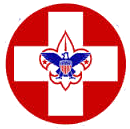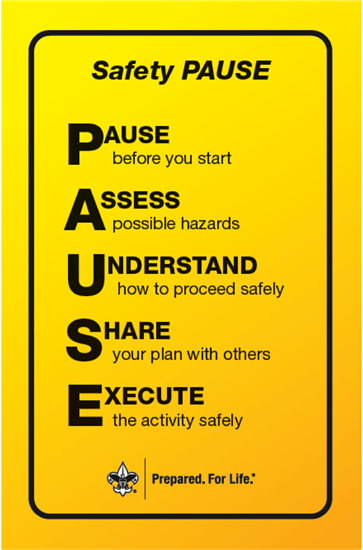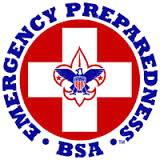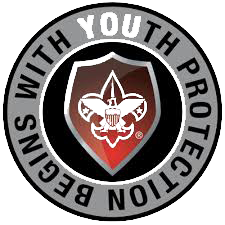Risk Management and Scouting Safely
The BSA's Commitment to Safety is ongoing and Redwood Empire Council takes great strides to ensure the safety of our youth as well as adult leaders.
is ongoing and Redwood Empire Council takes great strides to ensure the safety of our youth as well as adult leaders.
Few youth organizations encompass the breadth, volume, and diversity of physical activity common to Scouting, and none enjoy a better safety record. Key to maintaining and improving this exemplary record is conscientious and trained adult leaders who are attentive to safety concerns.
As an aid in the continuing effort to protect Scouting participants, the BSA National Health and Safety Committee developed the "Sweet Sixteen " of BSA safety procedures for physical activities. These 16 points embody good judgment and common sense and are applicable to all activities.
" of BSA safety procedures for physical activities. These 16 points embody good judgment and common sense and are applicable to all activities.
See the special article on our Risk Management Committee action during March-April-May 2020 with regard to the Coronavirus Link to Special REC Website Article
Youth Protection Training (YPT) is designed to help you keep youth safe from abuse. During YPT Training, participants learn the Boy Scouts of America’s Youth Protection Guidelines , signs of abuse, and how to report suspected abuse. After each section of material, participants will answer questions about that section’s topic.
, signs of abuse, and how to report suspected abuse. After each section of material, participants will answer questions about that section’s topic.
Youth Protection Training must be completed by all registered leaders at least once every 2 years, and is also highly recommended for parents and other adults working with youth in all settings. Be sure to save your YPT certificate at the conclusion of your training.
Click on this link for FAQ related to common BSA Youth Protection policy questions:
Youth Protection and Barriers to Abuse FAQs | Boy Scouts of America (scouting.org)
The purpose of the Guide to Safe Scouting is to prepare adult leaders to conduct Scouting activities in a safe and prudent manner. The policies and guidelines have been established because of the need to protect members from known hazards that have been identified through 100-plus years of experience. Limitations on certain activities should not be viewed as stumbling blocks; rather, policies and guidelines are best described as stepping-stones toward an enjoyable adventure.
is to prepare adult leaders to conduct Scouting activities in a safe and prudent manner. The policies and guidelines have been established because of the need to protect members from known hazards that have been identified through 100-plus years of experience. Limitations on certain activities should not be viewed as stumbling blocks; rather, policies and guidelines are best described as stepping-stones toward an enjoyable adventure.
All volunteers participating in official Scouting activities should become familiar with the Guide to Safe Scouting . Unit leaders should be aware of state and local government regulations that supersede Boy Scouts of America policies and guidelines.
. Unit leaders should be aware of state and local government regulations that supersede Boy Scouts of America policies and guidelines.

In order to provide better care for its members and to assist them in better understanding their own physical capabilities, the Boy Scouts of America recommends that everyone who participates in a Scouting event have an annual medical evaluation by a certified and licensed health-care provider— a physician (MD or DO), nurse practitioner, or physician assistant.
Providing your medical information on this four-part form will help ensure that you meet the minimum standards for participation in various activities. Note that unit leaders must always protect the privacy of unit participants by protecting their medical information. The BSA Annual Health and Medical Record is to be completed at least annually by participants in all Scouting events.
is to be completed at least annually by participants in all Scouting events.
Risk Management and Safety Resources
BSA Health and Safety Training
The Boy Scouts of America offers a variety of training courses to educate the adult leadership through training courses online as well as in a classroom setting. Additional information is also available in the Guide to Safe Scouting and on the BSA Scouting Safely
and on the BSA Scouting Safely website.
website. 
Training offered through BSA Partner Organizations (not offered by BSA directly):
First Aid/CPR/AED: Would you know what to do in a cardiac, breathing or first aid emergency? The right answer could help you save a life. With an emphasis on hands-on learning, our First Aid/CPR/AED courses give you the skills to save a life. Red Cross First Aid, CPR (cardiopulmonary resuscitation) and AED (automated external defibrillator) training is universally recognized for its effectiveness. These can help ensure that everyone from the Scout working on a First Aid merit badge to a Scouter leading a unit on a high-adventure trek is fully prepared.
Wilderness First Aid (WFA) is the assessment of and treatment given to an ill or injured person in a remote environment where definitive care by a physician and/or rapid transport is not readily available. Participants will learn how to assess, treat, and (when possible) contain emergencies within the scope of their training.
Camping and Activity/Event Planning Tools 
The campout safety checklist provides guidance on safety issues that you may encounter at a Scouting campout. Along with the Guide to Safe Scouting and the tour and activity plan, this tool will help you in having conversations on identifying risks that need to be mitigated or eliminated.
The event safety checklist provides guidance on safety issues that you may encounter at a Scouting event. This is a tool, not a list of mandatory guidelines. The intent of the checklist is to create conversations among event organizers around risks and ways to mitigate or eliminate them.
As an aid in the continuing effort to protect participants in a Scout activity, the BSA National Health and Safety Committee developed the "Sweet Sixteen" of BSA safety procedures for physical activity. These 16 points, which embody good judgment and common sense, are applicable to all activities.
Emergency Preparedness
 Emergency management, emergency preparedness, and disaster services are common throughout the United States - we take care of each other. By whatever name, these activities encompass preparedness, response, mitigation and recovery related to any kind of disaster, whether natural, technological, or national security. Emergency preparedness means being prepared for all kinds of emergencies, able to respond in a time of crisis to save lives and property, and to help a community or even a nation - return to normal life after a disaster occurs.
Emergency management, emergency preparedness, and disaster services are common throughout the United States - we take care of each other. By whatever name, these activities encompass preparedness, response, mitigation and recovery related to any kind of disaster, whether natural, technological, or national security. Emergency preparedness means being prepared for all kinds of emergencies, able to respond in a time of crisis to save lives and property, and to help a community or even a nation - return to normal life after a disaster occurs.
The Emergency Preparedness Merit Badge helps Scouts and Venturers learn skills to meet these challenges and be prepared for emergency situations.
Scouting Safely Incident Reporting
All volunteers and professional staff share responsibility in providing an effective Scouting program that meets the needs of young people and provides the proper health and safety of everyone concerned.
It is important that we sustain the safe operation of our programs and promote continuous improvement through organizational learning. Timely and complete incident reports support analysis that is critical to identifying needed improvement of the programs offered by the Boy Scouts of America. Review links to Incident Report forms and instuctions here
Mandatory Report of Child Abuse

All persons involved in Scouting shall report to local authorities any good-faith suspicion or belief that any child is, or has been, physically or sexually abused, physically or emotionally neglected, exposed to any form of violence or threat, exposed to any form of sexual exploitation, including the possession, manufacture, or distribution of child pornography, online solicitation, enticement, or showing of obscene material. You may not abdicate this reporting responsibility to any other person.
Steps to Reporting Child Abuse
1. Take care of the injured/find a safe place.
2. Preserve and document the evidence/take photos if appropriate.
3. Complete an incident report and notify your local council.
Council Scout Executive Charles Howard-Gibbon should be contacted directly at mobile phone (707) 495-6591, and if he is not available, please leave a voice message.
Reporting Violations of BSA Youth Protection Policies
If you think any of the BSA's Youth Protection policies have been violated, including those described within Scouting's Barriers to Abuse, you must notify your local council Scout executive or his/her designee so appropriate action can be taken for the safety of our Scouts.